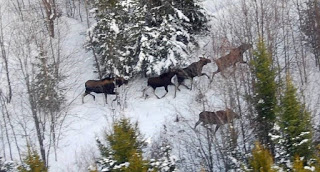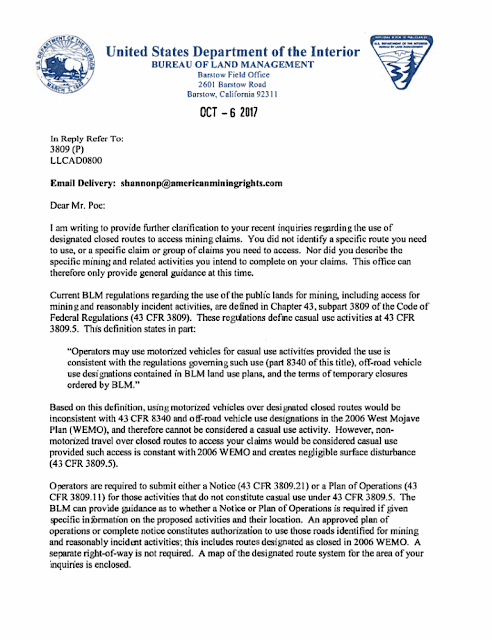Archive for the ‘Environment’ Category
Sen. Karin Housley issued this statement urging Congress to “delist the gray wolf as an endangered species.” In the statement, Sen. Housley states “I am pleased the U.S. House of Representatives included an amendment in one of its recently-passed spending bills to bypass the courts and delist the gray wolf as an endangered species. By nearly every metric, the gray wolf’s recovery goals have been exceeded and this language would return management responsibility where it belongs: with the states. Farmers and landowners are prevented from protecting their livestock against wolf attacks because of this burdensome regulation. Instead of siding with far-left environmentalists, Tina Smith should put her brand of radical, left-wing partisanship aside and support this effort in the U.S. Senate.”
By all objective measures, the timber wolf, aka the grey wolf, is no longer an endangered species. Further, it shouldn’t be listed as a threatened species, either. According to this government definition, the definitions of an endangered species and a threatened species are spelled out in simple, easy-to-understand wording. An endangered species “are at the brink of extinction now.” Meanwhile, threatened “species are likely to be at the brink in the near future.” This is important information, too:
Threatened status benefits species and people in two situations: (1) it provides Federal protection before a species reaches the brink of extinction; and (2) in the case of species that were initially listed as endangered, threatened status also allows scaling back Federal protection as they recover and no longer need the maximum protections of the Act.
State natural resource management agencies designated by the Service may “take” (kill, wound, trap, or move as defined by the Act) individuals of a threatened species in pursuit of conservation programs for the species. In contrast, those agencies are prohibited from “taking” an endangered species if the action might kill or permanently disable the specimen, move it to another state, move it beyond its historical range, or keep it in captivity for longer than 45 days.
The environmental activists to which Sen. Housley refers have argued, literally, that species that’ve been put on the endangered species list are forever at risk of extinction. In their mind, the ESA, aka Endangered Species Act, should protect endangered and threatened species alike with equal ferocity.
The thing about environmental activists is that they’re never willing to accept the fact that the ESA worked. If they did, they’d be much less rabid and much more moderate and tolerable.
When the Minnesota Senate passed SF2983, it did the right thing. Sen. John Marty is upset with the bill’s passage but it’s the right thing to do.
After the bill passed, Sen. Marty said “Declaring the science something you don’t like does not mean it is bad science. We’re basically saying as a Legislature that we don’t like the results you came up with so we’re going to declare it bad science.” Actually, Justin Eichorn’s bill is rock-solid on multiple fronts. Most importantly, a U of M study, which I wrote about in this post, said that “rice growth was stunted except when there was a high concentration of iron in the water. The study found that iron mitigated the damage sulfur caused to the rice.”
Therefore, Sen. Eichorn voted for the bill that’s been verified by multiple scientific studies:
In 2013 the state hired the University of Minnesota to do a scientific study of the effects of sulfates on wild rice and to determine what the standard should be. Also the Minnesota chamber hired an independent laboratory to do the same. Both studies agree that sulfate is not toxic to wild rice. The studies also found that if sulfates turn to sulfides it does slow the growth of wild rice. However if there is iron present in the water, iron combines with the sulfides and doesn’t allow the sulfides to affect the wild rice.
Sen. Marty is the politician who is fighting verified scientific findings.
Sen. Justin Eichorn, R-Grand Rapids, said he’s willing to work with the agency on a compromise but finds its current route untenable. Bill supporters argue that tougher discharge standards could prove costly for local communities, which could be forced to upgrade wastewater treatment facilities with expensive technology. They also say it would stifle industry, particularly mining companies.
“This bill will put a stop to what’s going on now, take a pause and go back to the drawing board,” Eichorn said, “and make sure if we are going to do something that everybody is on board and everybody gets a seat at the table, including industry, including municipalities, including environmental groups and government.”
The Trump administration is considering a rule change to something called “the blanket rule.” According to the article, it’s “probably an esoteric issue to most Americans, but to landowners and businesses, primarily in the Western U.S., the ‘blanket’ extension of ESA protections to “threatened” species has punished them for decades. A ‘take’ of a protected species can bring massive civil and criminal penalties. ‘Private property owners’ incentives are key because most endangered species depend on private land for most of their habitat,’ Wood said. ‘This reform will improve those incentives and make it easier for states, property owners, and environmentalists to work together on innovative conservation plans.’ The U.S. Fish and Wildlife Service extended “take” protections to species listed as ‘threatened’ under the ESA, despite Congress wanting federal agents to regulate “threatened” species different from those classified as ‘endangered.'”
When the ESA was enacted, Congress’s intent was to protect endangered species, which is defined as “any species in danger of extinction.” Meanwhile, threatened species are defined as “on the brink of becoming endangered.”
Its provisions give the Interior Department the power to determine what species are endangered and then to list them publicly. It makes it illegal to capture, kill, transport, sell, buy, possess, import or export any of the listed plants or animals. There is a separate category for “threatened” species, those organisms that are on the brink of becoming endangered. They are equally protected, except that scientists may take specimens when necessary for vital research.
In the United States the Office of Endangered Species currently lists 51 plants and 143 animals as endangered and 7 plants and 38 animals as threatened. To prevent the import or trade of endangered species native to foreign countries, the office lists 402 foreign animals as endangered and 16 animals and a plant as threatened.
The goal of the ESA is to properly manage plant and animal species so they’re no longer endangered or threatened.
Here in Minnesota, the ESA was critical in turning around the timber wolf population. At one point (the late 1960s and early 1970s), only a few families of timber wolves existed in Minnesota. After proper management, the timber wolf population, through cautious management, was rejuvenated to the point where there were open hunting seasons on the great grey wolf. That’s a legitimate success story. That should be the goal of management policies for all endangered or threatened species.
Instead, the ESA has been used as a weapon against developers. It’s time to de-weaponized the ESA and return sanity to development projects. That will be a difficult task. Environmental activist organizations like the Sierra Club, Conservation Minnesota and others have used the ESA to throttle projects. They won’t give up without a lengthy court fight.
Rejecting the blanket rule won’t fix the law but it’s a positive first step.
This is a breaking news report, an exclusive to LFR:
Furloughed Moose Stream Back Into National Park After Government Re-opens
International Falls, MN
January 23, 2018
All 46 moose have returned safely to Voyageurs National Park after being evacuated at midnight Friday, January 19 when congressional negotiations broke down, closing the federal government.
Since partisan politics began triggering government shutdowns in 1976, the moose in Voyageurs have been asked to vacate 19 times. The standard protocol is for the moose to make their way to Duluth where cargo aircraft fly them to China for care and feeding until the government re-opens.
In an agreement facilitated by the Congressman Hon. James Oberstar, China won a competitive bid for the occasional hosting of the park ruminates during shut-downs. China cares for the moose in Sichuan province at the giant panda reserve. According to China’s Foreign Ministry Spokesperson Hua Chunying, “the moose eat neither bamboo nor pandas so the two unlikely occupants of the reserve get along well.” She added that, “the lack of wolves in the panda preserve seem to give the moose a relaxing environment—sort of a vacation.” Even though the shutdown ended before the moose actually arrived in China this time, many environmentalists feel assured by the arrangement to care for the moose.
Each step of the moose herd’s progress was monitored by satellite using the radio collar that fashions each unit of flora and fauna in the park. No moose were harmed in the evacuation exercise.
Since receiving this breaking news story, LFR has confirmed that this is the shortest stay in China for the moose. LFR hasn’t confirmed whether the moose suffer jet lag from their trip.
When the American Mining Rights Association, aka AMRA, tried planning an event near Barstow, Calif., the BLM posted Route Closed signs on the trail event participants were scheduled to take. When “AMRA President Shannon Poe caught wind of the BLM scheme”, he called “the BLM office in Barstow and spoke to a guy by the name of Jeff Childers. And Childers, while he presented himself as the manager of the BLM office, was not … but he told me that they put the signs in the roads there and that the roads were now closed as part of the WEMO Plan.”
Unfortunately for Mr. Childers, a multitude of laws were against him. For instance, “the Mining Law of 1872 as amended” makes “blocking access to an active mining claim … illegal.” That isn’t the only statute that the BLM ignored. When Poe spoke with Childers, Poe “explained to Mr. Childers in a rather lengthy—probably a 45-minute call—that they cannot lock and block mining claim owners for a variety of reasons, the first being the Americans with Disabilities Act. Making a 70-year-old man with a fake knee and a fake hip pack in and walk two miles through the Mojave Desert to access his mining claim isn’t just immoral; it is illegal under the ADA as well as under the RS 2477 or Revised Statue 2477 law which states that all roads prior to 1976 must remain open.”
The night before the event, Katrina Symons, the “field manager of the Barstow District Office” of the BLM, met with Mr. Poe:
Symons agreed to meet Poe at his campsite at the Slash X Ranch on Friday, Oct. 13, preceding the outing. When Symons arrived about 5:30 p.m., she met with Poe and two senior members of the AMRA board of directors, Jere and Connie Clements, at a picnic table. “She had Jeff Childers with her and we talked for about 15 minutes about the desert tortoise and how we could protect them — just common sense stuff, and she had a big stack of pamphlets,” Poe said. According to Poe, Symons said the BLM would go a step further and check the roads the miners planned to use for tortoises on the Saturday morning of the outing. “I said, ‘Great. We’ll be out there at 9 o’clock. That’s fantastic! We’ll wait until you guys clear the road, and then we’ll go in.’”
Problem solved. Or, so he thought.
Then, in a shocking turn of events according to Poe, Symons threatened Poe with criminal prosecution, adding she would take photos of his vehicle and license plate once he had driven past the BLM road closure signs.
Poe then asked Symons to explain her sudden about-face change in position, he said. “She said: ‘I’m going to take picture of your truck, fill out an affidavit and send it to our law enforcement division for criminal prosecution,'” Poe said. “So, I said: ‘Last night, Katrina, you told me on the phone—and I have a witness—that you were going to give us unrestricted access,'” Poe said.
Predictably, Symons insists that there’s been a misunderstanding:
Federal misdirection?
“Well, I believe that Mr. Poe misunderstood,” said Symons. “Because, as I understand it, Mr. Poe had sent Mr. Childers a Utah Supreme Court ruling. Mr. Childers had informed him that it was basically a state ruling; it’s not federal—and that BLM will and does comply with the 1872 Mining Law and the associated mining regulations. So, I think that was more of a miscommunication or misunderstanding.” In a follow-up interview Dec. 1, Poe responded that the Utah case involving RS 2477 laws on rights-of-way and the Hicks case are two separate cases, and that the United States v. Steve A. Hicks case is obviously federal.
AMRA appears to know its rights based on federal law. It’s difficult to believe that they’d highlight a tangential state court ruling as the centerpiece of their argument. A state court case might or might not be applicable. The U.S. v. Steve Hicks isn’t just important. It’s on point, too.
Based on AMRA’s detailed understanding of the laws applicable to their mining claims, it’s difficult to believe the BLM’s statements. I’m inclined to believe AMRA’s statements because the BLM’s statements seem to be federal misdirection.
Late in 2016, President Obama officially created the Bears Ears National Monument on December 28, 2016. One of the first executive orders President Trump signed was to instruct the Interior Secretary to look into recently created national monuments. Last week, Secretary Zinke sent a report to President that included his findings and recommendations.
In this article published by the Navajo Times, it reports that “Pro-monument advocates are ‘deeply disappointed and aggrieved’ over reports that Interior Secretary Ryan Zinke has recommended to President Donald Trump to redraw the Bears Ears National Monument in southeastern Utah. ‘(Native American) grass roots in Utah and beyond are deeply disappointed,’ leaders of Utah Diné Bikéyah – a grassroots tribal group that began developing the Bears Ears conservation initiative in 2010 – wrote in a statement, ‘and aggrieved that (Zinke) appears to have recommended reducing Bears Ears National Monument.'”
The key part of the article comes when it says “Leaders of the Bears Ears Inter-Tribal Coalition – composed of members from Diné, Kiis’áanii, Ute, Ute Mountain and Zuni, also expressed “outrage,” criticizing Zinke’s reported recommendation that Trump shrink the size of the 1.35-million acre Bears Ears (Shash Jaa’) monument declared late last year by President Barack Obama.”
That part is important because it says President Obama created the monument through executive order. Had he created it through an act of Congress, then Interior Secretary couldn’t reduce the size of it through executive recommendation. Instead, President Obama decided he’d do whatever he wanted to do. He created Bears Ears National Monument with the stroke of his pen.
It’s one thing to create a national monument. It’s quite another to set aside 1,350,000 acres. (FYI- that’s 2,100+ square miles.) I like what President Trump is doing because it’s relatively respectful of President Obama. After all, President Trump could’ve gotten rid of that designation. Instead, he’s simply reducing its footprint.
In a session that saw tons of weird things happen, finding out that Sen. John Marty and other Twin Cities DFL senators tried ousting Sen. Bakk as majority leader ranks right up there:
ST. PAUL — How successful of a job did Senate Majority Leader Tom Bakk of Cook do for the Iron Range while also being a key player in making split government in Minnesota work? Well, some disgruntled DFL liberal legislators from the Twin Cities area tried to unseat him in caucus as leader of the majority party in the Senate.
Their attempted DFL coup in the early morning hours of the Saturday finale of the 2015 legislative special session fizzled like a bad fuse on an unexploded firecracker. Bakk’s support within the caucus was unwavering.
The Senate majority leader told the Mesabi Daily News Saturday afternoon that while he preferred not to comment directly about the caucus dust-up, he was pleased with the intra-Senate DFL backing he received and also his role in a session that relied for success on bipartisan partnerships with the GOP House majority.
By now, saying that the DFL is fractured isn’t news. That’s been established for at least a month. In fact, we’ve known that the split is essentially a geographic split.
It isn’t hyperbole to say that the Metro DFL, in their minds, have put up with Range DFLers on environmental views because they needed the Range delegation’s votes on their economic policies. This feud was obvious during the DFL’s 2014 State Convention. That’s when the Twin Cities activists, led by DFL State Chairman Ken Martin, fought off a resolution saying that the DFL supports mining. When that was deemed too controversial, it was clear that a fight was brewing.
It looks like the special session was when the fuse reached the explosive.
This should make for an interesting session in 2016. Sen. Bakk doesn’t strike me as someone who forgets these things quickly.
UPDATE: Briana Bierschbach’s post says that the DFL caucus discussion about whether Sen. Bakk should continue happened after the special session had adjourned:
ST. PAUL — The Minnesota House and Senate had adjourned their one-day special session to finish passing the state budget and most lawmakers had gone home, but at 3 a.m. Saturday Senate Democrats were just getting started.
I was originally told that it happened after the Agriculture/Environment Bill had been defeated. This explanation makes more sense. Consider this my correction to my original post.
Technorati: John Marty, Tom Bakk, David Tomassoni, Iron Range, Metrocrats
This special session wouldn’t play out true to form if there wasn’t a major fight on the Ag/Environment bill. This session hasn’t run smoothly since Sen. Bakk ambushed Gov. Dayton on the commissioners’ pay raise. Since then, the signs of a slow-motion DFL meltdown have been quite visible. Don’t expect that to change.
First, the Metrocrats defeated the Ag/Environment bill. There was much rejoicing amongst the Metrocrats. Now they’re getting worried because the arm-twisting has started to get one of the 32 senators who voted against the bill to a) call for reconsideration of the bill and b) to switch his/her vote against the bill initially to being for the bill this time.
This tweet says it all:
#mnleg Remember. This is what "divided" government looks like.
— mnpact (@newtbuster) June 12, 2015
Apparently, DFL legislators and special interests don’t like having to deal with people who don’t agree with them. They think that opposition needs to be squashed immediately and permanently. This is their way of saying that it isn’t fun when they don’t get their way because uppity peasants (that’s us) highlight the foolishness of their policies.
Time after time this session, the DFL fought for policies that the people rejected. First, a plethora of organizations fought against Gov. Dayton’s universal pre-K initiative because it was expensive, filled with unfunded mandate and was unsustainable. Other than that, people liked it. Next, it was Gov. Dayton fighting to repeal a bill he’d already signed. That’s becoming a trend with him. (See repealing B2B sales taxes, though this time, he called for it sooner. LOL)
This year’s biggest difference is that the fighting has been DFL vs. DFL for the most part. Rural DFL is getting more and more upset with Metrocrats by the day. This Ag/Environment bill is just the highest profile example of this fight.
Whatever the outcome today, things won’t end up well for the DFL in November, 2016.
If stupidity was worth its weight in gold, St. Paul, MN would be the richest city in the world today. Here’s what’s happening:
ST. PAUL – A shaky coalition that put together a package of environmental and agricultural programs may not hold up in a coming special session, putting a final piece of the state budget in question.
Just 10 Senate Democrats, a quarter of the majority caucus, voted for that bill, requiring all but one GOP senator to get behind the budget to pass it in late May. Gov. Mark Dayton’s veto gave environmental advocates and urban Democrats a second chance to address concerns that range from eliminating a citizen oversight board at the state’s pollution agency to cracking open funds dedicated for landfill cleanup.
But several Senate Democrats say the changes in the final product don’t go far enough to win their votes. And the Senate’s top Republican said the 25 votes his caucus put up in May could dwindle to just 10 in June as GOP members take issue with the growing size of the state’s total budget.
Republicans are on the verge of eliminating one of the most obstructionist, counterproductive agencies in state government. That, apparently, isn’t enough for these perfectionists. They’re on the verge of voting against a good bill that eliminates the Citizens Review Board. If the bill is defeated, that will give the DFL another opportunity to pass a bill that’s far less friendly. That’s the definition of stupidity.
Let’s hope that these DFL senators are bluffing. If they aren’t, they should be ridiculed mercilessly.
The DFL, meanwhile, is acting almost as foolishly. They’re willing to torpedo a bill that would prevent a government shutdown. If it fails, the DFL will be to blame for a government shutdown. Period. Gov. Dayton vetoed the environment bill initially. Then he agreed to a bill that’s virtually identical only to have the DFL legislature cut his legs out from under him. Republicans will have voted for the bill twice.
On second thought, it’s clear that the DFL is thinking just as foolishly as this handful of GOP senators.
Thanks to this article, I’ve learned something new today. I didn’t know this:
Though the makeup of the group is largely affiliated with the DFL, the Rangers don’t consider their party alignment the most important aspect of their political goals. It all comes down to the Range, whether you’re Democrat or Republican.
“I like to make my own decisions and exercise my own independent thinking,” said Anzelc.
The reason I didn’t know that is because Rep. Anzelc’s statement isn’t true. Rep. Anzelc votes like a Metrocrat about 95% of the time. The Range delegation puts up token opposition to the Metrocrats’ environmental regulations, then get bought off by not fighting for the things that would actually improve Rangers’ lives. That isn’t independence. That’s tokenism.
If the Range delegation wanted to be a potent political force, they’d join forces with Republicans each year and insist on a list of high priority items that would create mining jobs. Instead, they keep doing what the Metrocrats want them to do. That isn’t fighting for improving Rangers’ lives. That’s putting party loyalty ahead of loyalty to their constituents.
Common goals are one of the central political strategies of the Rangers, who often face legislative opposition from other parts of the state. While the Range and the metro area are both DFL political strongholds, their lawmakers have different ideas about issues ranging from gun legislation to the environment. Meanwhile, Republicans from other parts of the state have largely had an unsympathetic voting record.
I don’t doubt that Republicans haven’t always voted with the Range delegation. There’s no question, however, that the Metrocrats always vote against the Range delegation on mining issues. In fact, Metrocrats have bragged in fundraising emails that they stood up to the Range delegation.
The thought that Range delegation Democrats are independent is laughable from the standpoint that they haven’t insisted on legislation that opens up mining. Rep. Anzelc rightly states that the Range economy is a natural resource-based economy. The Metrocrats stand vehemently opposed to natural resource-based economies. That won’t change anytime soon.
Rep. Anzelc can spin it that the Range delegation is independent thinking but the truth is that they’re puppets controlled by the Metrocrats.






